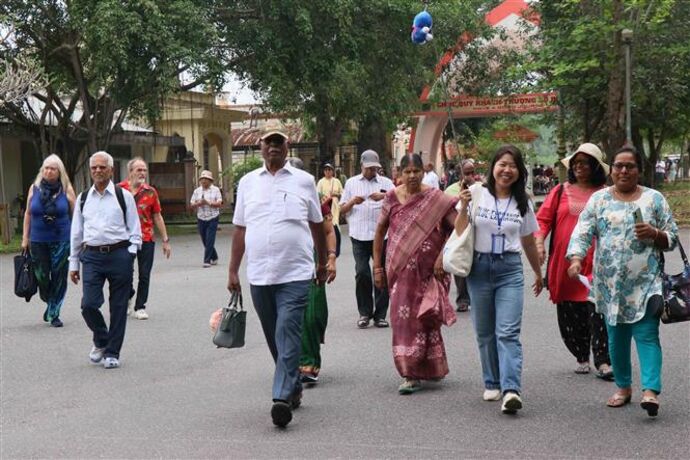THAT Typhoon Biparjoy made landfall in India on Friday 16 June, accompanied by strong winds and impressive waves on the coast, before weakening on its way north.
Indian meteorologists have warned that Biparjoy, which means “catastrophe” in Bengali, is likely to destroy homes and damage power lines as it passes through the western state of Gujarat.
Which is “very strong cyclonic stormbroke off the coast near the port of Jakhau (west) on Thursday evening, before starting to fade several hours later. Early Friday, India’s meteorological service forecast wind speeds of 100 km/h.
“It is expected to move northeast and weaken into a cyclonic storm” by Friday morning, forecasted meteorologists, who earlier said the weather phenomenon was expected to move towards Pakistan’s Sindh province, where the major port city of Karachi is found.
More than 175,000 people have been preventively displaced from the area that Biparjoy will cross, according to estimates, in the face of the anticipated risk of flooding and “total collapse” of certain buildings.
Jayantha Bhai, a 35-year-old trader from the Indian coastal city of Mandvi, told AFP he was worried for his family’s safety on Thursday morning before the typhoon hit. “This is the first time I’ve been confronted with a hurricane,” said the father of three boys aged eight to fifteen, who plans to coop himself up in his small concrete house that leans against his shop.
“It’s nature, we can’t fight it,” he admitted in the pouring rain. By evening, the lower streets began to flood in Mandvi, where almost all shops were closed.
Mass evacuation
In India, the Gujarat government says 94,000 people have left coastal and low-lying areas for shelter elsewhere.
In Pakistan, Climate Change Minister Sherry Rehman announced that 82,000 people had been evacuated from the southeastern coastal region.
In the fishing village of Zero Point, very close to the border with India, several hundred thatched-roof dwellings have almost all been abandoned and only stray cats and dogs still inhabit the area, where a hundred fishing boats dock along the wharf. .
“We are afraid of what will happen,” 20-year-old Jaffer Ali told AFP before the typhoon hit. On Wednesday, Sherry Rehman told the press it was a cyclone “as Pakistan has never known”.
Many of the affected areas were areas that were inundated by floods during last year’s rainy season.
It has submerged a third of Pakistan under water, destroyed two million homes and caused the deaths of more than 1,700 people. “That’s all due to climate change,” said Sherry Rehman.
The phenomenon is amplified by global warming
Authorities estimated the waves could reach four meters high, risking flooding of parts of the major city of Karachi, which is home to around 20 million people.
On Wednesday night, not far from the Indian port of Jakhau, about 200 people from the Kutch district gathered at a small one-floor medical centre. Many people here are worried about livestock left on their farms.
Dhal Jetheeben Ladhaji, a pharmacist, said around 10 people had stayed behind to care for hundreds of animals essential to people’s livelihoods.
“We were terrified, we didn’t know what was going to happen next,” said the 40-year-old.
Typhoons are common in this Indian Ocean region, home to tens of millions of people. But scientists explain that this phenomenon is gaining strength due to global warming.
One of them, a climatologist at the Tropical Meteorological Institute of India Roxy Mathew Koll, told AFP that the cyclone drew its energy from warm water and surface temperatures in the Arabian Sea, also known as the Arabian Sea, were 1.2 to 1.4 degrees Celsius higher than four decade ago.
“The rapid warming of the Arabian Sea, coupled with global warming, is likely to increase the flux of heat from the ocean to the atmosphere and drive more intense cyclones,” he concluded.
With AFP

“Twitter junkie. Hipster-friendly bacon expert. Beer ninja. Reader. Communicator. Explorer. Passionate alcohol geek.”







